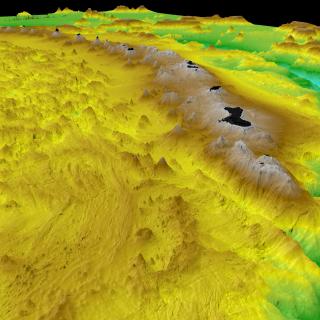Collecting Lava Samples from the Mariana Back Arc
Where do you go to find brand-new seafloor? During the NA171 expedition, the team onboard E/V Nautilus is using ROV Hercules to explore recent volcanism on the seafloor spreading axis of the Mariana Archipelago. Collecting lava samples helps scientists learn more about the geochemical history of this tectonically active area of the Western Pacific. And this part of the Mariana back-arc had never been explored of sampled before! Listen in as Expedition Co-Lead Scientist Dr. Bill Chadwick explains why and how we select samples in the back-arc region. Once analyzed ashore, the team hopes these samples will reveal new data on the water and chemical content of the lava as it formed deep beneath the surface. Samples from the deep sea provide important clues to past eruptions because the surrounding high pressure minimizes how much mixed gas can escape the rapidly cooling rock (a process called degassing) before or during an eruption.
The Mattingan: Mariana Arc Volcanic Exploration (NA171) expedition is exploring deep-sea areas identified by the local management and science community, including sites with signatures of active volcanism, abyssal plain habitats, and areas in and around the Monument where new data can support resource management priorities. This expedition is supported by NOAA Ocean Exploration, the Bureau of Ocean Energy Management, and the US Geological Survey via the Ocean Exploration Cooperative Institute.

Mattingan: Mariana Arc Volcanic Exploration
E/V Nautilus will begin the 2025 season exploring the ocean of the Mariana Islands- one of the most tectonically and volcanically dynamic locations on the planet. This area is home to one of the most active arc volcanic systems on Earth with more than 60 submarine volcanoes, and a back-arc spreading center where new seafloor is created.



